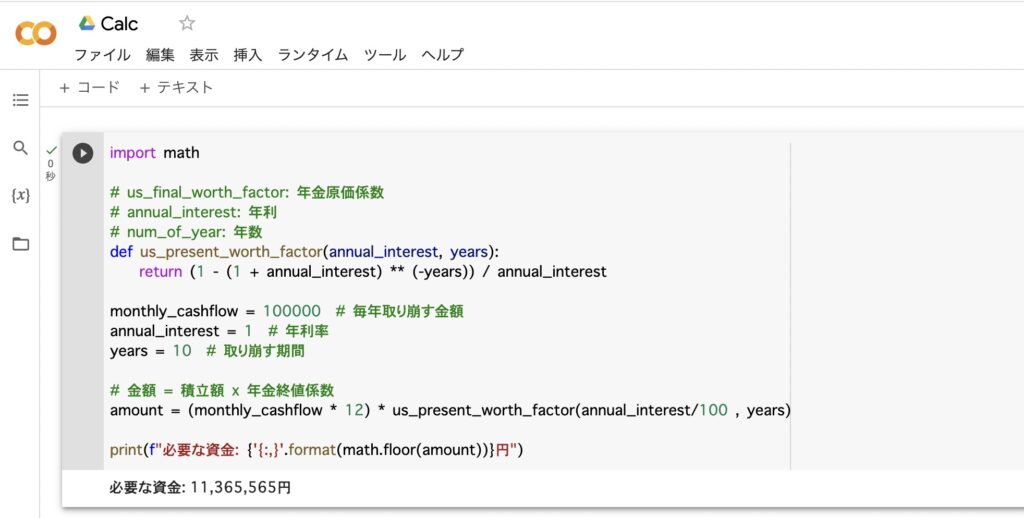毎年生活費として、一定の金額を取り崩して行くときに年金などの資金がいくら必要となるかを計算します。
毎年一定金額を取り崩すときに必要となる資金を計算するためには、将来の現金の流れを考慮して、現在価値(PV)を求める必要があります。PVは、将来のキャッシュフローを現在の価値に割り引いた金額です。
計算式
年金現価係数を用いて計算します。
必要資金 = 取崩額 × 年金現価係数
年金現価係数 = (1 ー ((1 + 年利率)^(年数 × −1)))÷ 年利率
Pythonプログラム
import math
# us_final_worth_factor: 年金原価係数
# annual_interest: 年利
# num_of_year: 年数
def us_present_worth_factor(annual_interest, years):
return (1 - (1 + annual_interest) ** (-years)) / annual_interest
monthly_cashflow = 100000 # 毎年取り崩す金額
annual_interest = 1 # 年利率
years = 10 # 取り崩す期間
# 金額 = 積立額 x 年金終値係数
amount = (monthly_cashflow * 12) * us_present_worth_factor(annual_interest/100 , years)
print(f"必要な資金: {'{:,}'.format(math.floor(amount))}円")計算例
例)毎年生活費として年間120万円(月10万円)を10年間で取り崩したい。年利率1%で複利運用する場合に必要となる資金はいくらか?
1,200,000 ×((1 -(1 + 0.01)^-10)÷ 0.01 ) = 11,365,565円
PythonのプログラムをGoogle Colabへコピーして結果を確認してみて下さい。









コメント